Indian Society and Social Issues: January 2025 Current Affairs | Current Affairs & General Knowledge - CLAT PDF Download
SC Dismissed Review Petition on Same-Sex Marriage
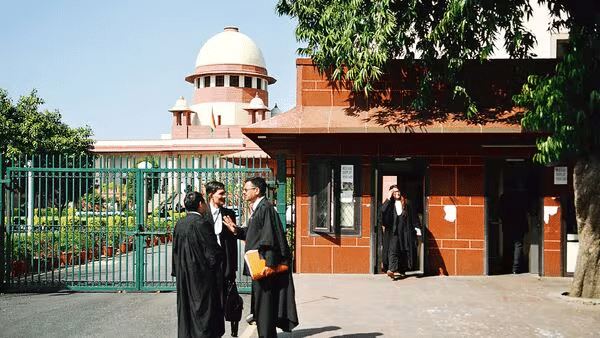
Why in News?
The recent judgment by the Supreme Court of India (SC), which dismissed review petitions against its ruling from October 2023 regarding same-sex marriage, has stirred significant discussions. The 5-bench SC, led by the Chief Justice of India, delivered a 3:2 majority verdict rejecting the constitutional validity of same-sex marriages.
Key Takeaways
- The Supreme Court ruled against legalizing same-sex marriage under the Special Marriage Act (SMA), 1954.
- SC emphasized that it is the responsibility of Parliament and state legislatures to formulate laws regarding same-sex marriage.
- There is no fundamental right to marry recognized under the Indian Constitution, although rights for same-sex couples to enjoy benefits similar to live-in partners were upheld.
Additional Details
- What is Same-Sex Marriage? Same-sex marriages are unions between individuals of the same gender, which currently lack legal recognition in India.
- Supreme Court Judgment 2023: The SC determined that the SMA does not apply to same-sex couples, leaving legal recognition to legislative bodies.
- Special Marriage Act (SMA), 1954: This Act provides a framework for civil marriages between individuals of different religions or castes, ensuring legal recognition and rights such as inheritance.
- Arguments in Favour of Same-Sex Marriage: Advocates argue it upholds equality and human rights, providing legal and economic benefits, and aligns with international principles.
- Arguments Against Same-Sex Marriage: Critics cite religious beliefs, the natural order, potential legal complications, and adoption issues as reasons against legalizing same-sex unions.
Burqa Ban in Switzerland
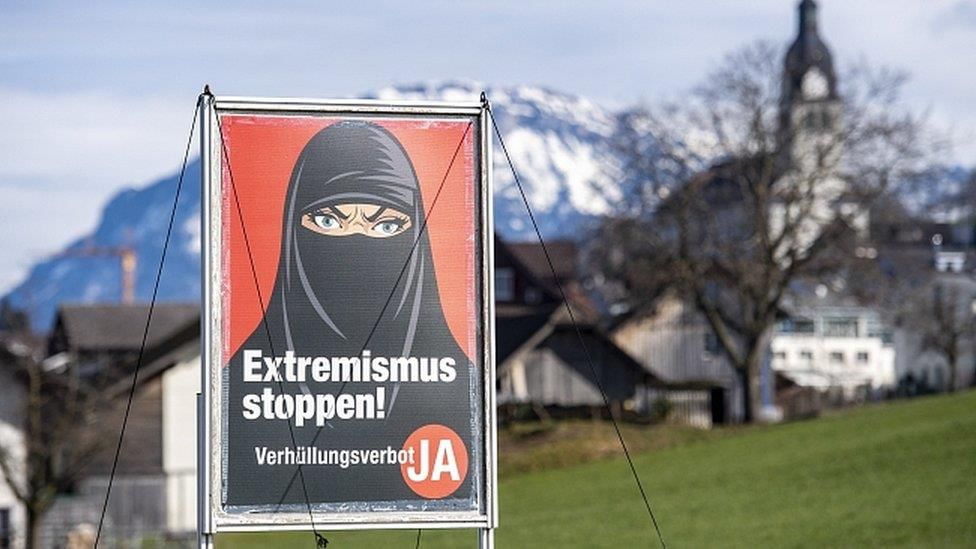
Why in News?
Switzerland has implemented a prohibition on face-covering garments, including burqas and niqabs, effective from January 1, 2025. This measure, which was approved through a nationwide referendum in March 2021, is part of an ongoing global discussion regarding the wearing of hijabs and burqas, a topic that has also ignited considerable debate in India.
Key Takeaways
- Switzerland's ban on face-covering garments reflects societal attitudes towards religious dress.
- The issue of hijab wearing has led to significant legal rulings and discussions in India.
Additional Details
- Amna Bint Basheer v CBSE, 2016: The Kerala High Court ruled that wearing a hijab is an essential religious practice but upheld the CBSE dress code, which included additional safeguards.
- Kerala High Court, 2018: The case of Fathima Thasneem v State of Kerala involved two students wanting to wear a headscarf. The court sided with the school's decision, emphasizing the precedence of the school’s collective rights over individual rights.
- Resham v. State of Karnataka, 2022: The Karnataka High Court validated the state's ban on hijabs in government colleges, stating that wearing a hijab does not qualify as an essential religious practice and that the ban did not infringe upon the Freedom of Speech and Expression.
- Split Verdict by Supreme Court (SC), 2022: A two-judge bench delivered a split verdict on a related case, which has been referred to a larger bench for further deliberation.
Arguments in Favour and Against Such Ban
Arguments in Favour of Ban:
- Uniformity and Discipline: A dress code fosters uniformity and discipline within educational settings, preventing overt religious symbols and maintaining a neutral environment.
- Gender Equality: Practices like the hijab may be seen as perpetuating gender inequality and limiting women’s freedom.
- Integration into Society: Banning such attire may promote integration, reducing the potential alienation associated with visible religious markers.
- Not Absolute Fundamental Right: Rights are not absolute and can be reasonably restricted; Article 25's right to religion cannot overshadow other fundamental rights in government-funded institutions.
- Security Concerns: Bans can enhance public safety by preventing anonymity that could conceal dangerous items, as illustrated by incidents like the 2019 Easter bombings in Sri Lanka.
Arguments Against Ban:
- Freedom of Religion: The Indian Constitution guarantees the right to practice religion; banning practices may alienate individuals and escalate social tensions.
- Autonomy and Choice: Bans infringe on personal liberties and the right of individuals, particularly women, to choose their attire.
- Impact on Education: Restrictions may deter female students from conservative backgrounds from attending school, adversely affecting their education. For instance, in the 2019-20 academic year, Muslim girls in Uttar Pradesh had a lower attendance rate (63.2%) compared to Hindu girls (81%).
- Such bans can disproportionately affect educational access for girls from conservative backgrounds, leading to further marginalization.
- The debate surrounding hijab and burqa bans underscores the necessity of balancing individual freedoms with societal values and institutional discipline. While religious rights are constitutionally protected, they are not absolute and must be reconciled with public order and equality.
- Judicial decisions highlight the importance of inclusivity and gender equality, emphasizing the need for ongoing dialogue and policies that respect personal freedoms without obstructing access to education or marginalizing communities.
World Malaria Report 2024
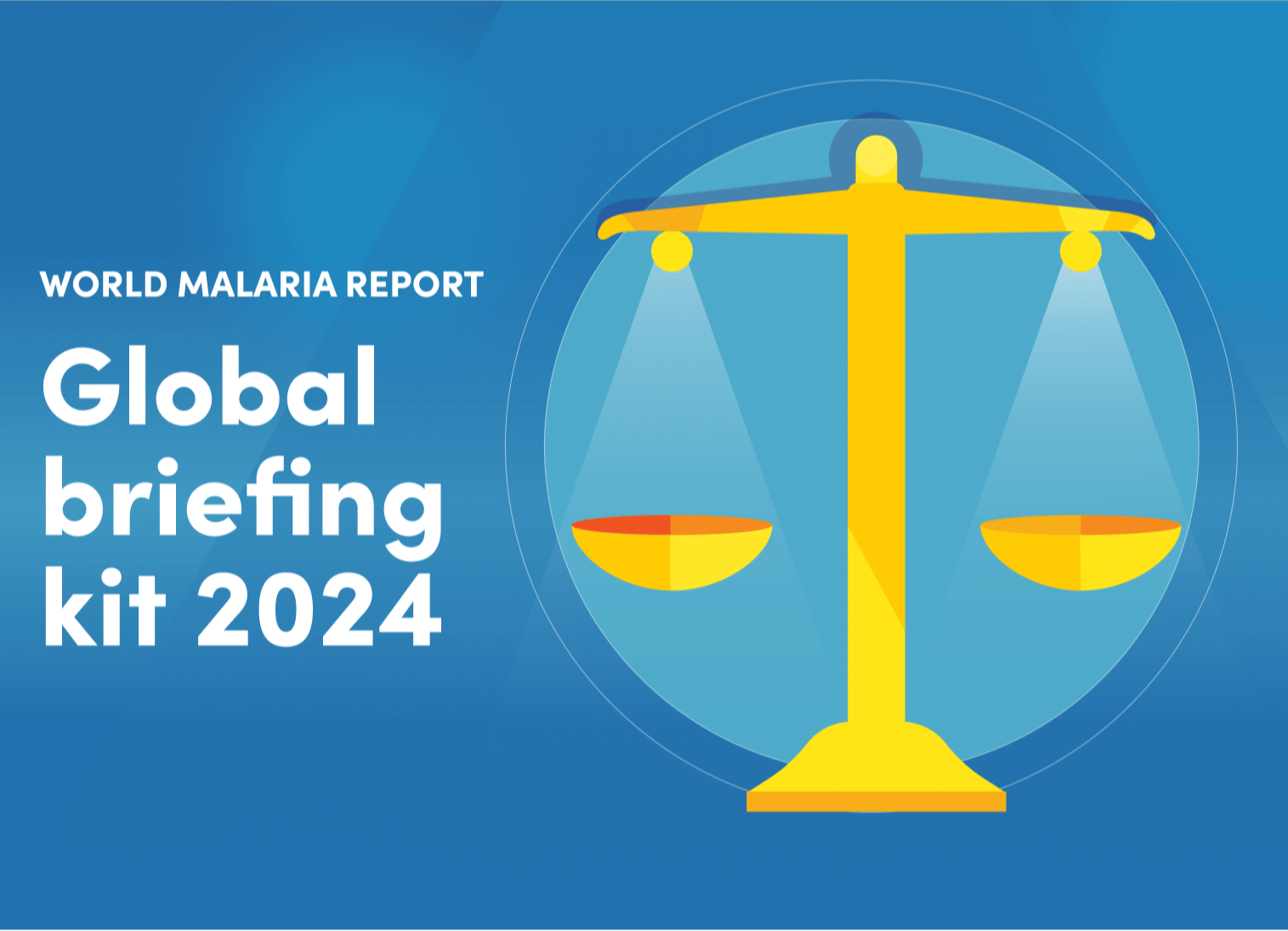
Why in News?
The World Health Organization (WHO) has recognized India's exceptional progress in reducing malaria cases and fatalities between 2017 and 2023. India is on track to achieve malaria-free status by 2030, aiming for zero indigenous cases by 2027.
Key Takeaways
- India has significantly decreased malaria cases and deaths over the years.
- Globally, malaria cases rose to 263 million in 2023, with 597,000 deaths reported.
- WHO African Region accounted for 94% of global malaria cases and 95% of deaths.
- India aims for malaria elimination through various strategic initiatives.
Additional Details
Global Findings:
- An estimated 263 million malaria cases occurred globally in 2023, representing an increase of 11 million cases from the previous year.
- Global malaria mortality was reported at 597,000 deaths, reflecting a decline from 622,000 deaths in 2020.
- The WHO African Region accounted for 94% of all global malaria cases and 95% of related deaths in 2023.
- Five countries contributed to approximately 52% of global malaria cases: Nigeria (26%), Democratic Republic of Congo (13%), Uganda (5%), Ethiopia (4%), and Mozambique (4%).
- Since 2015, nine countries, including Egypt, have been certified as malaria-free.
- The introduction of two malaria vaccines, RTS,S and R21, has enhanced vaccination coverage in endemic regions.
India Specific Findings:
- At the time of independence, India faced 7.5 crore malaria cases annually with 800,000 deaths.
- Persistent efforts have led to a reduction of malaria cases by over 97%, dropping to 2 million cases annually and just 83 deaths by 2023.
- Between 2015 and 2023, cases declined from 1,169,261 to 227,564, and deaths fell from 384 to 83, marking an 80% reduction.
- The Annual Blood Examination Rate improved from 9.58 in 2015 to 11.62 in 2023, facilitating early detection and timely intervention.
- India exited the High Burden to High Impact (HBHI) group in 2024, signifying a vital achievement.
- States classified as high-burden have decreased from 10 to 2 (Mizoram & Tripura), with others transitioning to medium and low-burden statuses.
- Ladakh, Lakshadweep, and Puducherry have achieved a Zero status, qualifying for subnational malaria elimination verification.
Government Initiatives:
- National Framework for Malaria Elimination 2016-2030: A strategic plan to eliminate malaria.
- National Vector-Borne Disease Control Programme: Focuses on prevention and control of various vector-borne diseases, including malaria.
- National Malaria Control Programme (NMCP): Established in 1953, targeting severe malaria impacts through insecticidal spraying, case monitoring, and patient treatment.
- High Burden to High Impact (HBHI) Initiative: Launched in 2019 in four states to promote malaria reduction through insecticidal net distribution.
- Malaria Elimination Research Alliance-India (MERA-India): Formed by the Indian Council of Medical Research (ICMR) to collaborate on malaria control research efforts.
Challenges and Developments Related with Denotified Tribes
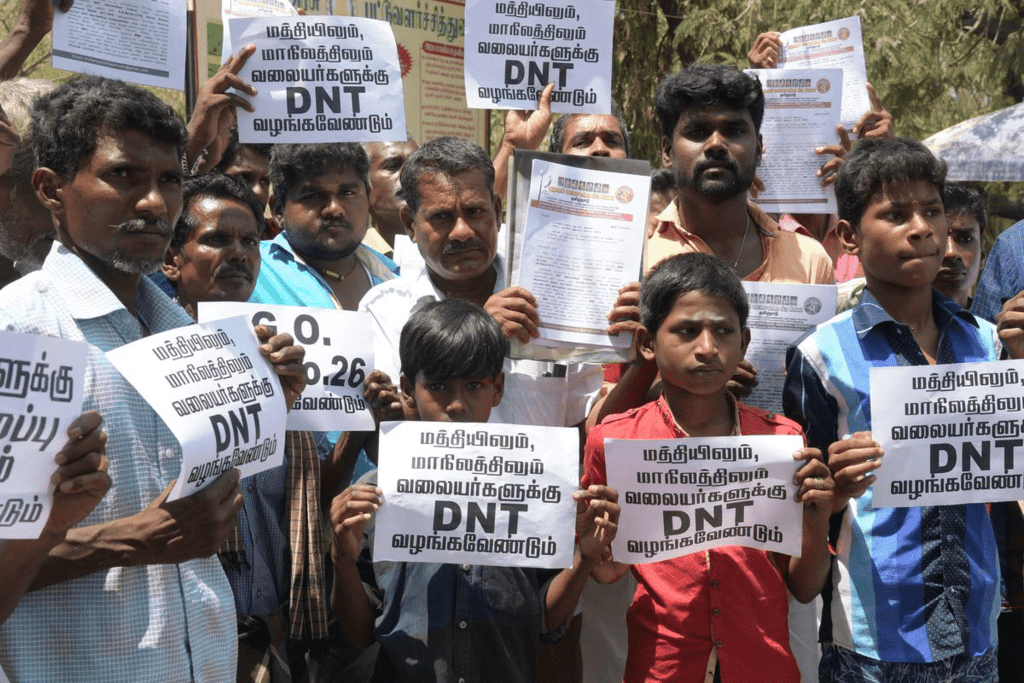
Why in News?
The Development and Welfare Board for Denotified, Nomadic, and Semi-Nomadic Tribes (DWBDNC) is making renewed efforts to implement the recommendations of the Idate Commission to address the challenges faced by these communities and improve their socio-economic conditions.
Nomadic, Semi Nomadic, and Denotified Tribes (NTs, SNTs, and DNTs)
- Nomadic communities: Communities that move frequently instead of settling in one place. They are often engaged in traditional occupations like herding, trading, or crafts.
- Semi-nomadic Tribes: Partially nomadic and partially settled, migrating seasonally but also establishing temporary settlements.
- Denotified tribes (DNTs): Formerly classified as “criminal tribes” under the Criminal Tribes Act, 1871 during British rule. The Act was repealed in 1952, and these communities were “de-notified.”
- While most DNTs are spread across the Scheduled Castes (SC), Scheduled Tribes (ST) and Other Backward Classes (OBC) categories, some DNTs are not covered in any of the SC, ST or OBC categories.
- Status: The Idate Commission had concluded there were a total of 1,526 DNT, NT, and SNT communities across the country, of which 269 were not yet categorised as either SC, ST, or OBC.
- There are a total of 425 Denotified Tribes, 810 Nomadic Tribes and 27 Semi Nomadic Tribes in India.
- Of DNT communities, Lambadas (STs) are the most vocal and visible, followed by Vadderas (BCs) in government sector and political spheres.
Challenges faced by NTs, SNTs, and DNTs
- Lack of Recognition and Documentation: Denotified communities are lacking citizenship documents, which makes their identity invisible and causes hindrances in obtaining government benefits, constitutional, and citizenship rights.
- Limited Political Representation: Inadequate representation of these communities makes it challenging to voice their concerns and advocate for their rights.
- Social Stigma and Discrimination: NTs, SNTs, and DNTs often face discrimination and social stigma, both due to their historical denotified status and their distinct way of life.
- Economic Marginalization: Lack of access to resources, markets, and employment opportunities results in economic marginalization of these communities.
- Educational Deprivation: Educational opportunities for these tribes are limited, leading to high illiteracy rates.
Recommendations of the Idate Commission
- In 2014 , a National Commission for Denotified, Nomadic and Semi Nomadic Tribes was constituted under the Chairmanship of Bhiku Ramji Idate for a period of three years.
- The commission has given the following recommendations;
- There is a need to identify challenges faced by the NTs, SNTs, and DNTs owing to the stigma imposed by the enactment of the Criminal Tribes Act, 1871.
- It also suggested the non-inclusion of DNTs/NTs/SNTs under the SC/ST/OBC and formulation of specific policies for the former, among many others.
- Setting up a permanent commission for Nomadic, Semi Nomadic, and Denotified Tribes (NTs, SNTs, and DNTs) in India.
- It stressed on taking measures to discern hurdles endured by the communities in availing basic facilities such as education, employment, health care, and legal documents, among others.
Steps taken by Government
- Development and Welfare Board for DNTs, SNTs, and NTs (DWBDNC): Constituted in 2019 to address welfare concerns.
- NITI Aayog Identification Efforts: A committee was established to finalize the identification of these communities.
- Scheme for Economic Empowerment of DNTs (SEED): Launched in 2022 with a budget of ₹200 crore over five years (2021-26).
- The four components of the Scheme for Economic Empowerment of DNTs are:
- Coaching for competitive exams.
- Health insurance.
- Community-level livelihood initiatives.
- Financial assistance for housing construction.
Way Ahead
- The colonial mindset about the Denotified Tribes having “criminal tendencies” needs to change to ensure their human rights are not violated.
- Proper documentation of their identities needs to be speeded up so that they get the benefits of welfare schemes and the basic needs are provided to them.
- The NHRC has suggested that there is a need to ensure representation of Denotified tribes in parliament, government institutions and higher education to mitigate the challenges faced by them.
Eradicating Manual Scavenging
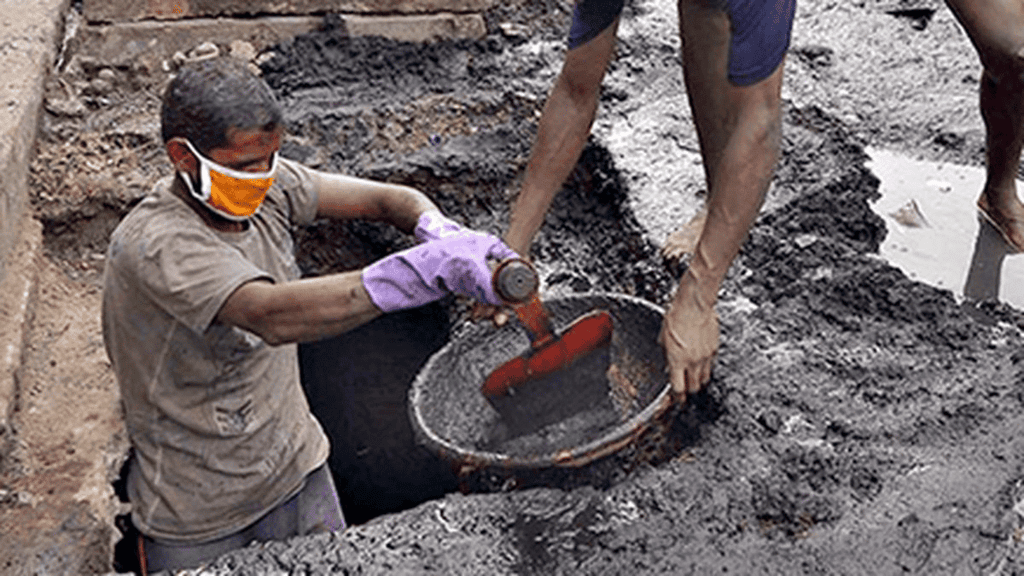
Why in News?
The National Human Rights Commission (NHRC) recently held an open discussion on the rights and dignity of manual scavengers.
What are the Major Challenges Faced by Manual Scavengers?
- Health: Manual scavengers are often exposed to human waste, which carries many pathogens. This exposure makes them vulnerable to diseases like Hepatitis, tetanus, and cholera. The presence of toxic gases such as hydrogen sulfide in septic tanks poses a severe asphyxiation risk, potentially leading to sudden death. Government data indicates that 377 individuals have died between 2019 and 2023 due to hazardous cleaning of sewers and septic tanks.
- Social Stigma: Manual scavengers face stigma and are treated as untouchables, which reinforces social exclusion and perpetuates the caste system.
- Economic Challenges: Manual scavengers receive meager pay, often below the minimum wage, trapping them in poverty. They are employed on a contractual or daily-wage basis without job security or benefits.
- Double Discrimination: Women manual scavengers experience double discrimination based on gender and societal stigma, including sexual harassment and exploitation.
- Psychological Issues: The social stigma associated with manual scavenging leads to significant mental health challenges such as anxiety and depression.
- Drug Use: To cope with the stress and stigma of their work, many manual scavengers turn to drug use, worsening their health issues.
What is the Supreme Court Guideline on Manual Scavenging?
Dr. Balram Singh Case, 2023:
- The Supreme Court issued 14 directives to the Union, States, and Union Territories to eradicate manual scavenging.
- Some key directives include:
- Eradication of Manual Sewer Cleaning: Phased measures to eliminate manual sewer cleaning.
- Rehabilitation of Sewage Workers: Compensation (Rs 30 lakhs for death, Rs 10-20 lakhs for disabilities), employment for next of kin, and education for dependents.
- Accountability for Outsourced Work: Mechanisms for accountability, including contract cancellations and penalties.
- NALSA Involvement in Compensation: NALSA to manage compensation disbursement and models.
- Monitoring and Transparency:. portal to track deaths, compensation, and rehabilitation.
Way Forward
- Mechanization: Introducing automated or semi-automated equipment for safer sanitation work, such as robotic arms or vacuum trucks.
- OHS Standards: Recognizing sanitation work as hazardous under the Occupational Safety, Health, and Working Conditions Code 2020 to improve safety standards.
- Health Screenings: Implementing periodic health screenings for sanitation workers, focusing on respiratory and dermatological conditions.
- Expanding the Swachh Bharat Mission (SBM): Including the health and dignity of sanitation workers in SBM, emphasizing safety and empowerment.
- Capacity Building: Providing training and safety gear for workers, along with financial assistance for technological innovations in hazardous waste cleaning.
- Incentivizing Mechanization: Training workers and empowering women-led Self-Help Groups (SHGs) for sustainable livelihoods.
Global Nutrition Targets
Why in News?
- A recent Lancet study evaluating global progress on Global Nutrition Targets (GNTs) from 2012 to 2021 showed slow progress in tackling maternal and child malnutrition, undernutrition, and overweight.
- The findings raise concerns about policy design and the need for innovative strategies to address these ongoing issues.
What are Global Nutrition Targets (GNTs)?
- World Health Assembly Resolution, 2012: Endorsed a Comprehensive Implementation Plan on maternal, infant, and young child nutrition, setting six global nutrition targets for 2025.
- Global Nutrition Targets:
- Achieve a 40% reduction in the number of children under-5 who are stunted.
- Achieve a 50% reduction in anaemia in women of reproductive age.
- Achieve a 30% reduction in low birth weight.
- Ensure that there is no increase in childhood overweight.
- Increase the rate of exclusive breastfeeding in the first 6 months to at least 50%.
- Reduce and maintain childhood wasting to less than 5%.
Key Terms
- Malnutrition: It is an imbalance between the nutrients the body needs and the nutrients it receives. It encompasses both undernutrition (including stunting (low height for age), wasting (low weight for height), and underweight (low weight for age)) and overnutrition (overweight and obesity), posing a dual burden on public health.
- Anaemia: Anaemia is a condition of low red blood cells or haemoglobin, reducing oxygen supply to tissues, mainly affecting women and children.
Key Findings of the Study
- Slow and Insufficient Progress: Across 204 countries, there has been slow and insufficient progress in meeting the GNTs from 2012 to 2021, with projections up to 2050 showing limited success.
- Stunting: Few countries are expected to meet the targets for stunting in children under 5.
- Low Birth Weight, Anaemia, and Childhood Overweight: None of the countries are projected to meet the targets for low birth weight, anaemia, and childhood overweight by 2030.
- Anaemia in India: Anaemia in India has remained static for two decades. Iron deficiency is assumed to be the cause but accounts for only one-third of anaemia cases, unknown causes contribute to the other significant third. Anaemia prevalence increased during the Covid-19 lockdown when school meals (Midday Meal Scheme) stopped, highlighting the need for a broader nutrition approach. The study found discrepancies in anaemia measurements, in India, venous blood-based (blood is drawn from a vein) anaemia prevalence (as recommended by WHO) was half that of capillary blood-based (blood is taken from a fingertip) prevalence in national surveys.
- Stunting: Stunting often develops within the first two years of life, increasing from 7–8% at birth to 40% by age two in India. Overfeeding children after age 2 years may lead to being overweight rather than correcting stunting. Poor children in India consume only 7 grams of fat per day, against the required 30–40 grams.
- Childhood Overweight: Overweight among children is increasing globally, including in India, contributing to "metabolic overnutrition," which could lead to chronic health problems such as non-communicable diseases. A significant portion of Indian children (50%) face metabolic overnutrition, which contributes to non-communicable diseases.
Recommendations
- Diversify diets to address anaemia, as it’s not solely caused by iron deficiency.
- Focus on prevention of stunting in the first two years of life.
- Improve energy intake, particularly fat intake, for children under 3.
- Adopt more accurate and context-specific methods for measuring anaemia and stunting.
- Address both undernutrition and overnutrition in policy to prevent non-communicable diseases.
Challenges for Achieving GNTs
Global:
- Persistent Anaemia: The global prevalence of anaemia among women of reproductive age has remained largely unchanged. Anaemia burdens low-income countries, especially rural, poor, and uneducated populations, due to insufficient awareness and targeted policies.
- Slow Progress on Stunting: Despite efforts, the number of stunted children is projected to reach 127 million by 2025, missing the target of 100 million, due to a lack of early policies targeting the initial days of a child's life.
- Rising Overweight and Obesity: The rising prevalence of overweight and obesity, affecting 37 million children under 5 and over 390 million children and adolescents aged 5–19 in 2022, is driven by factors such as urbanization, changing dietary patterns, and reduced physical activity.
- Childhood Wasting: Childhood wasting affects an estimated 45 million children under 5 globally. Childhood wasting prevention faces challenges like food insecurity, limited healthcare, and poor sanitation, especially in South Asia.
India:
- Limited Dietary Diversity: Diets in India are often dominated by rice, wheat, and cereals, with insufficient intake of fruits, vegetables, dairy, and proteins, leading to poor nutrition. The lack of dietary diversity, especially among lower-income households, limits access to essential micronutrients. The National Family Health Survey (NFHS)-5 found that only 11.3% of children aged 6 months to 2 years receive a 'minimum acceptable diet' as per WHO standards, highlighting significant gaps in both food quality and feeding frequency.
- Economic Barriers:. significant portion of the population struggles to afford a nutritious diet due to low incomes and high food prices, contributing to malnutrition.
- Inadequate Data: The absence of comprehensive national surveys on dietary diversity hampers targeted nutrition interventions. While the NFHS provides some insights, it lacks detailed data on the quantities of food consumed, limiting its utility in addressing nutrition gaps.
- Non-Communicable Diseases (NCDs): The rising diet-related NCDs like obesity, diabetes, and hypertension is increasing the burden on public health systems, requiring more focus on addressing both under- and over-nutrition.
- Food Systems Constraints: Climate change and extreme weather events further threaten food security, impacting crop yields and the availability of diverse foods.
Way Forward
- Policy Realignment: Incorporate flexible and region-specific dietary solutions in national programs like POSHAN Abhiyaan and promote initiatives like National Millets Mission (NMM). Address systemic gaps in the Public Distribution System (PDS) to include nutrition-dense food items.
- Set National-Level Targets: Establish baselines and annual reduction goals specific to country contexts.
- Strengthen Resource Allocation: Mobilize financial and human resources to implement nutrition-specific and nutrition-sensitive programs.
- Integrate Nutrition Across Sectors: Incorporate nutrition outcomes into health, food systems, and water, sanitation, and hygiene (WASH) policies. Strengthen primary healthcare for effective maternal and child nutrition services.
- Develop Monitoring Mechanisms: Enhance surveillance systems to track progress on selected nutrition indicators.
Managing Hazardous Waste
40 years after the Bhopal Gas Tragedy, hazardous waste from the abandoned Union Carbide India Limited (UCIL) factory in Madhya Pradesh has been removed for incineration.
What was the Bhopal Gas Tragedy?
- About: On December 2, 1984, a chemical leak at the UCIL pesticide plant in Bhopal involved methyl isocyanate (MIC) gas, resulting in over 5000 deaths and poisoning more than half a million people, making it the worst industrial disaster in history.
- Prior to 1984, there were reports of chemical leaks, including phosgene and methyl isocyanate.
- Cause of the Leak:. failed maintenance attempt on December 1, 1984, along with malfunctioning safety systems, triggered a chemical reaction in a tank filled with MIC, leading to the release of at least 30 tonnes of MIC gas into the atmosphere by December 2, 1984.
- Health Effects:Immediate: Respiratory issues, abdominal pain, eye problems, and neurological disorders were common among those exposed. Long-Term: Chronic health problems such as reduced lung function, genetic disorders, pregnancy losses, and increased infant mortality rates became prevalent in affected populations.
- Government and Legal Response: The Indian government enacted the Bhopal Gas Leak Disaster (Processing of Claims) Act, 1985 to represent the victims legally. Initially, UCIL offered USD 5 million in relief, but the Indian government demanded USD 3.3 billion, leading to an out-of-court settlement in 1989 for USD 470 million. In 2010, seven Indian nationals working for UCIL were convicted for causing death by negligence but were released on bail.
- Aftermath and Legacy: Survivors continue to lack adequate healthcare and face residual toxic materials at the factory site. Welfare organizations are advocating for the removal of hazardous waste from the closed factory site.
What is Hazardous Waste?
Overview:
- Hazardous waste refers to materials that pose a risk to health or the environment due to their toxic, flammable, reactive, or corrosive nature, either individually or in combination with other substances.
Sources of Hazardous Waste:
- Use of Hazardous Substances: The majority of hazardous waste is generated during the production and consumption of chemicals, which increases with the rising demand for consumer goods.
- Inappropriate Technologies: Outdated technologies used by small and medium enterprises (SMEs) lead to inefficient resource conversion, resulting in higher and more toxic hazardous waste.
- Post-Treatment: Residues containing hazardous substances are generated from wastewater treatment and gaseous emissions.
Hazardous Waste Regulations
- Environment Protection Act, 1986: The Hazardous Waste (Management and Handling) Rules, 1989 were introduced under this Act and amended in 2008, 2009, 2010, and 2016 to include various other waste types such as used electronics, paper waste, metal scrap, and waste tires.
- Basel Convention, 1992: India is a signatory to this convention aimed at reducing the movement of hazardous waste across countries.
- Waste Generation in India: India generates approximately 7.66 million tonnes of hazardous waste annually from industries, with 44.3% being landfillable, 47.2% recyclable, and 8.5% incinerable. Seven states—Gujarat, Maharashtra, Tamil Nadu, Andhra Pradesh, West Bengal, and Chhattisgarh—generate 83% of the hazardous waste.
- Hazardous Waste Production: Most hazardous waste is produced from chemical production and metal processing industries, along with the treatment of wastewater and flue gases.
How is Hazardous Waste Disposed?
- Co-processing: This method involves using waste materials, such as industrial by-products or hazardous waste, as alternative raw materials or fuels in industries, especially in cement manufacturing or other high-temperature processes. Around 25 cement plants in India have adopted co-processing.
- Material and Energy Recovery: Material recovery focuses on extracting the material value from the waste, while energy recovery utilizes the calorific value of the waste. For example, recovering copper from cable residues or lead from used batteries. Spent lube oil, solvents, solid and semi-solid grease, and wax can also be used as alternative fuels in industrial processes requiring thermal energy.
- Incineration: This process involves burning waste at high temperatures in large furnaces, converting waste materials into bottom ash, flue gases, particles, and heat, which can be used to generate electricity.
- Pyrolysis: Pyrolysis entails the thermal decomposition of waste materials in the absence or limited presence of oxygen at temperatures ranging from 300°C to 900°C. This process produces useful products such as bio-oil, synthesis gas (syngas), and char.
Conclusion
The Bhopal Gas Tragedy serves as a stark reminder of the devastating consequences arising from negligence in industrial safety. Despite improvements in regulations like the Hazardous Waste Management Rules, 2016, and international agreements such as the Basel Convention, challenges in safe hazardous waste disposal remain. This underscores the urgent need for stricter compliance, technological advancements, and effective remediation strategies for hazardous waste in India.
|
122 videos|947 docs|37 tests
|
















